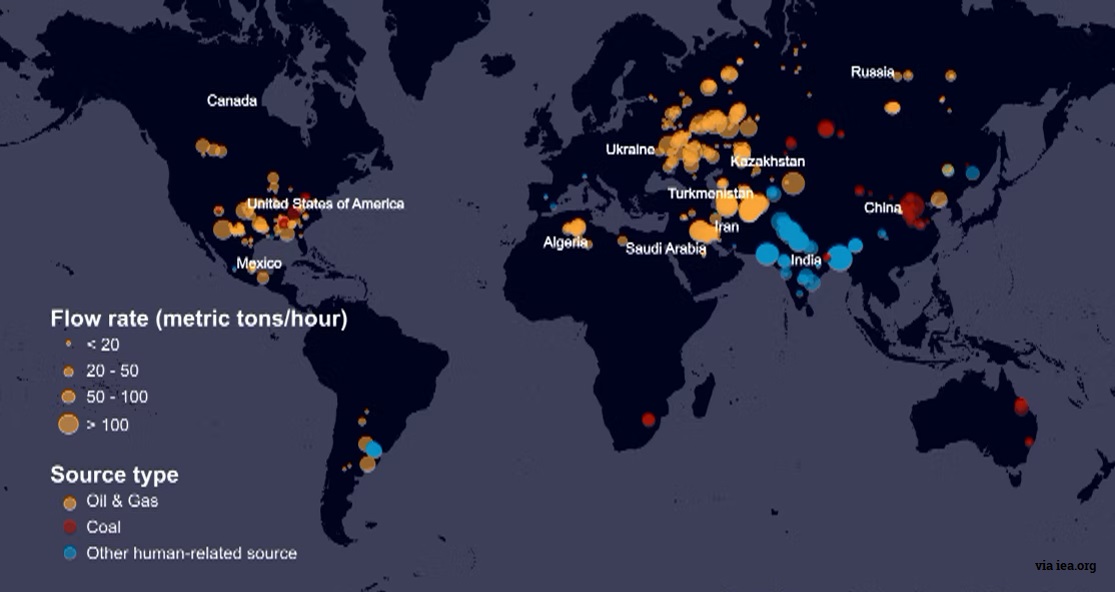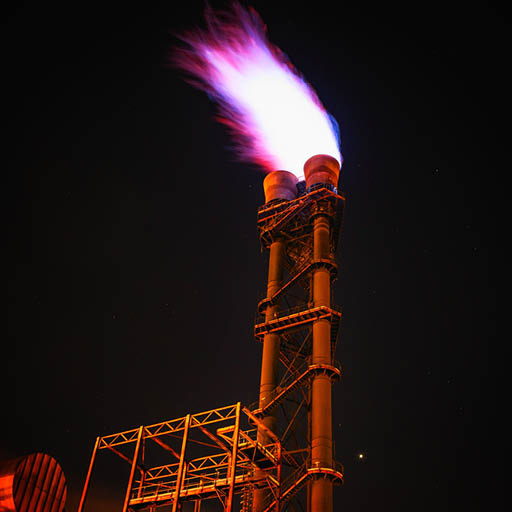Methane emissions are a climate crime kept quiet yet cutting them is the fastest way to tackle warming



Methane emissions around the world must be cut as a matter of urgency if we are to limit global warming.
That’s the unequivocal finding of the International Energy Agency (IEA), which yesterday (23 February) released its new methane emissions tracker for 2022.
The energy sector is responsible for about 135 million tonnes of methane in 2021, accounting for 40 per cent of human-driven global methane emissions, which have risen by just under five per cent in the past year due to higher fossil fuel demand and production.
For the first time, the new tracker also includes methane emissions from coal and bioenergy, which are respectively responsible for 43.6 and 9.1 million tonnes of methane emissions in 2021.

Satellite-detected methane leaks from human activities, 2021 (via IEA)
Even more striking is the revelation that global methane emissions from the energy sector are about 70 per cent higher than those officially reported by national governments. This is not the first time that underreporting has been revealed – whenever independent observers look more closely, they discover additional methane released. For example, EIA’s campaign partner the Clean Air Task Force has been reporting leaks all over Europe using its optical gas imaging camera.
EIA Climate Campaigner Kim O’Dowd said: “There is a clear need for more ambitious and effective monitoring and reporting of methane emissions, including the use of satellite imagery and other existing technologies using aircraft and drones.
“The numbers are alarming – methane is responsible for 25 per cent of the rise in global temperatures since the industrial revolution and also contributes to the formation of tropospheric ozone, a harmful air pollutant which causes about one million premature deaths each year.”
The good news is that IEA has once again confirmed that ambitious policies encouraging the use of available technologies can drastically cut methane emissions, at low or negative costs.
More than 40 per cent of oil and gas emissions could be reduced at no net cost using well-known existing technologies. Solutions such as leak detection and repair or bans on routine and flaring have high abatement potential and could reduce methane emissions from oil and gas by half.
Additional measures can lead to the target of a 75 per cent reduction by 2030, needed to avoid climate tipping points.
 These findings should help inspire ambitious policies, notably for the signatories of the Global Methane Pledge which have committed to reach a global reduction of 30 per cent of methane emissions by 2030, but also to encourage major emitters, such as China and Russia, to join the initiative.
These findings should help inspire ambitious policies, notably for the signatories of the Global Methane Pledge which have committed to reach a global reduction of 30 per cent of methane emissions by 2030, but also to encourage major emitters, such as China and Russia, to join the initiative.
With the release last December of the EU Methane Regulation, now in the hands of Parliament and Council, the European Union has a real opportunity to influence these major emitters.
The EU is not an important producer of methane emissions within its border, but it is responsible for significant upstream emissions because it imports fossil energy from high emitting countries such as Algeria, Qatar, Russia and the US.
Despite this, the European Commission failed to include any meaningful measures to reduce methane emissions in non-EU countries associated with imported oil, gas and coal consumed in the bloc. The proposal needs to be amended to address imports, also from the petrochemical sector, and to include fossil gas phase-out planning as well as strengthening the rules on leak detection and repair, monitoring, reporting, verification and routine venting and flaring.
EU policymakers have a responsibility to ensure that the bloc’s regulatory framework on methane is coherent and in tune with promises made. The new IEA report should act as a wakeup call for ambitious policies and actions from government and industry.
O’Dowd added: “Addressing methane emissions is the fastest and easiest way to avoid dramatic near-term global warming – and the time to act is now.”